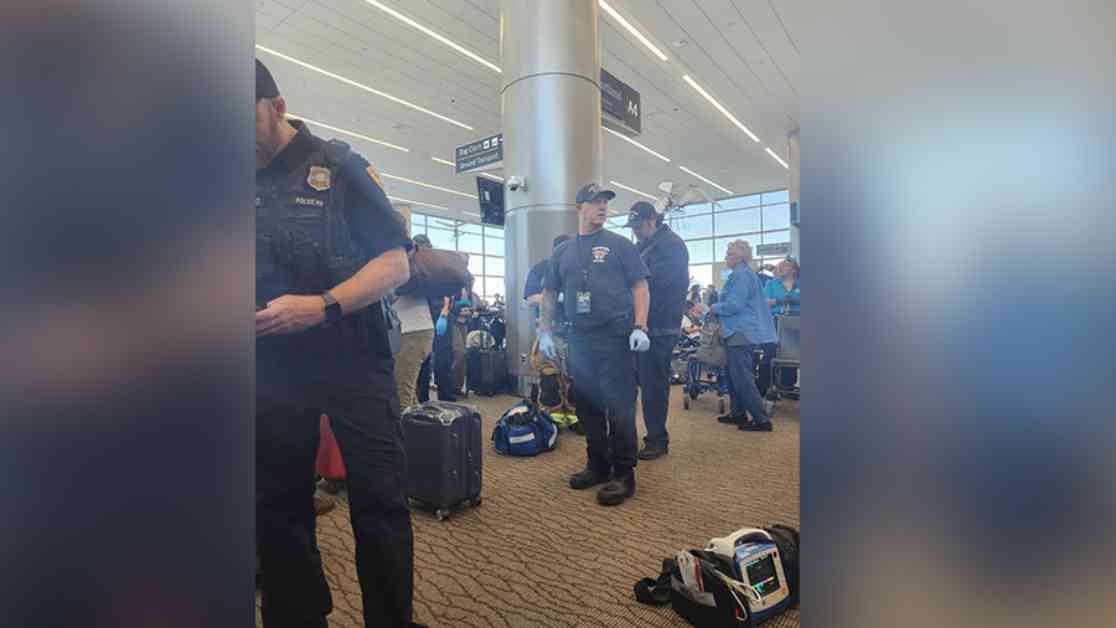Delta Flight Incident: Passengers Describe Injuries and Cabin Pressure Issues
Passengers aboard Delta Air Lines Flight 1203 recently experienced a terrifying ordeal when the aircraft encountered pressurization issues during a flight from Salt Lake City to Portland. Two passengers, Caryn Allen and Jaci Purser, shared their harrowing experiences of the incident, which left them with injuries such as bloody noses and ruptured eardrums.
Caryn Allen recounted the moment when she noticed something was amiss on the flight. Her husband was seen clutching his ears in pain, signaling that they were not the only ones affected. Looking around, Allen spotted a fellow passenger with a severe bloody nose, prompting others to come to his aid. Jaci Purser described feeling like she was being stabbed in the ear as the pressure in the cabin caused her ear to pop and bleed. The passengers’ accounts paint a vivid picture of the chaos and discomfort they endured during the flight.
As the situation escalated, passengers observed the plane dipping and circling over the Great Salt Lake. Despite the alarming signs, the crew initially provided limited information about the reason for the diversion. Eventually, it was revealed that the Boeing 737-900 aircraft was experiencing pressurization issues, leading to the decision to return to Salt Lake International Airport.
Valerie Walker, a retired Delta Air Lines pilot, shed light on the protocol for handling pressurization problems mid-flight. She explained that the outflow valve is a critical component that regulates cabin pressure, and any malfunction can trigger a series of safety procedures. In such instances, pilots must assess the situation and determine the best course of action to ensure the safety of passengers and crew.
While the incident caused distress and injuries to several passengers, Delta Air Lines acted swiftly to address the situation. Medical personnel met the flight upon landing, evaluating and treating individuals who required medical attention. Jaci Purser, diagnosed with a ruptured eardrum, received prompt medical care and support from the airline. Despite the physical and emotional toll of the incident, passengers expressed gratitude for the assistance provided by Delta’s staff.
Subheadings:
Understanding Pressurization Issues in Aircraft
The Importance of Prompt Response to In-Flight Emergencies
Lessons Learned and Moving Forward
The Federal Aviation Administration (FAA) has launched an investigation into the events of Flight 1203 to determine the root cause of the pressurization issue. Delta Air Lines has since released a statement acknowledging the incident and expressing regret for the inconvenience caused to passengers. The airline’s technicians successfully resolved the pressurization problem, allowing the aircraft to return to service the following day.
As passengers reflect on their ordeal, they emphasize the need for clear communication and transparency during emergencies. Caryn Allen noted that while Delta’s crew was attentive and supportive after landing, there was a lack of information provided during the flight. Open dialogue and updates from the flight deck can help alleviate passengers’ anxiety and ensure everyone is informed about the situation at hand.
In the aftermath of the incident, passengers like Jaci Purser are coping with the physical and emotional aftermath of their injuries. Ruptured eardrums, in particular, can have lasting effects on one’s hearing and quality of life. Purser’s experience serves as a reminder of the potential risks associated with in-flight emergencies and the importance of prioritizing passenger safety above all else.
Moving forward, airlines must continue to prioritize safety protocols and training to effectively respond to emergencies like the one encountered on Flight 1203. By learning from past incidents and implementing proactive measures, the aviation industry can enhance its preparedness and ensure the well-being of passengers and crew members alike. As investigations unfold and findings are revealed, stakeholders will have valuable insights to guide future safety improvements and prevent similar incidents from occurring.
In conclusion, the Delta Flight Incident highlights the unpredictable nature of air travel and the critical importance of swift and effective responses to in-flight emergencies. By sharing their stories and advocating for transparency and communication, passengers play a vital role in shaping the industry’s approach to safety and crisis management. As the aviation community reflects on this incident, lessons learned will inform future practices and protocols to enhance the overall safety and security of air travel for all.

